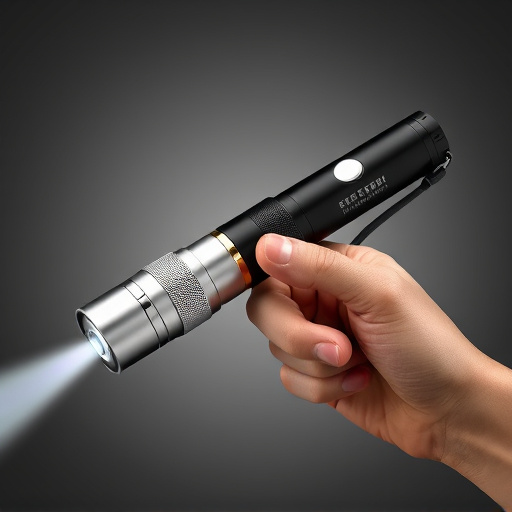Push button expandable batons offer a practical, powerful self-defense solution with their unique telescoping design. To maximize their effectiveness, understand strike zones and target pressure points for strategic control during confrontations. Balancing safety and power, these batons enable users to disable attackers temporarily while minimizing harm, making them versatile tools for personal protection and law enforcement. Regular practice and environment assessment are crucial for mastering their use.
Uncover the power of self-defense with our guide on push button expandable batons. This comprehensive overview delves into the intricacies of these versatile tools, exploring their unique features like instant expansion for enhanced reach. We demystify strike zones and target areas, highlighting their crucial role in effective self-defense strategies. Learn the science behind powerful striking techniques and discover safety tips to maximize impact. Arm yourself with knowledge and embrace a new level of confidence.
- Understanding Push Button Expandable Batons: A Comprehensive Overview
- Defining Strike Zones and Target Areas: Their Role in Self-Defense
- The Science Behind Effective Baton Striking Techniques
- Strategies for Maximizing Safety and Impact with Your Baton
Understanding Push Button Expandable Batons: A Comprehensive Overview
Push button expandable batons are innovative self-defense tools designed for easy accessibility and maximum impact. These versatile devices combine the functionality of a traditional baton with the convenience of a compact, easily concealable form factor. The unique feature that sets them apart is their ability to extend quickly and efficiently upon activation, providing users with an enhanced reach and power advantage in various self-defense scenarios.
The operation of a push button expandable baton is straightforward. A simple pressure on the activation button causes the baton to telescopically extend, transforming from a short, manageable length into a much longer and sturdier striking tool. This mechanism ensures that users can deploy the baton swiftly and effectively when faced with unexpected threats. Crafted from high-strength materials like aluminum or steel, these batons offer durability and resilience, making them suitable for both personal protection and law enforcement applications.
Defining Strike Zones and Target Areas: Their Role in Self-Defense
In the realm of self-defense, understanding strike zones and target areas is paramount to effectively employing tools like the push button expandable baton. These strategic points are designed to maximize impact and control during a confrontation, allowing users to neutralize threats swiftly and efficiently. By identifying specific zones on the body—such as pressure points, vital organs, or nerve centers—self-defense practitioners can deliver targeted strikes that disrupt an attacker’s balance, stamina, and ability to cause harm.
Knowing where to aim is crucial for several reasons. Firstly, it ensures the safety of the defender by minimizing damage to non-target areas. Secondly, it enhances the effectiveness of the baton strike, making it easier to control and subdue an aggressor. For instance, pressing a push button expandable baton against specific pressure points can temporarily disable an attacker’s limbs or even render them unconscious, providing an opportune moment for escape or further self-defense maneuvers.
The Science Behind Effective Baton Striking Techniques
The effectiveness of baton striking techniques lies in a blend of precise biomechanics and strategic targeting. A key component is understanding the concept of ‘push button’ motion, which refers to a quick, powerful contraction of muscles to propel the baton forward with minimal effort. This technique is particularly useful for self-defense tools like the push button expandable baton, where speed and efficiency can be life-saving. By focusing on specific strike zones, practitioners can maximize impact while minimizing the risk of injury to both attacker and defender.
Target areas include sensitive spots like pressure points, joints, and vital organs, each offering unique advantages. For instance, strikes to the groin or eyes can incapacitate an opponent instantly, while blows to the neck or knees can cause severe pain and disorientation. Mastering the science behind these techniques allows users of expandable batons to defend themselves effectively, ensuring they are prepared for a variety of scenarios.
Strategies for Maximizing Safety and Impact with Your Baton
When utilizing a push button expandable baton, safety and effectiveness go hand in hand. One key strategy is to understand and respect the strike zones. Targeting vulnerable areas like the throat, solar plexus, or sides of the ribcage can cause significant impact, but it’s crucial to aim for control over destruction. Aim for center mass when de-escalation is a priority, focusing on the body’s core to temporarily disable without causing severe injury.
For maximum safety and impact, practice your baton techniques regularly. Learn proper hand positioning and follow-throughs, ensuring you can extend and retract the baton quickly and accurately. Additionally, always consider the environment; clear space around you allows for more control and reduces the risk of collateral damage or accidental injuries to bystanders.
In conclusion, understanding the intricate details of push button expandable batons, their strike zones, and target areas is paramount for effective self-defense. By grasping the science behind striking techniques and implementing safety strategies, individuals can maximize the impact of these versatile tools while ensuring personal safety. The comprehensive overview presented here serves as a valuable guide for those seeking to empower themselves with this essential self-defense mechanism.
